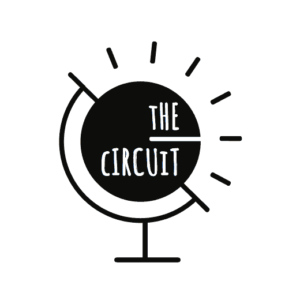Do you remember the rapper Canibus? The Bronx-based MC rose to fame in the late 90s before crashing due to a series of high-profile beefs, most notably with Eminem. Remember, the greatest blunder one can fall victim to is never to get involved in a land war in Asia. But only slightly less well-known is this: never get into a lyrical feud with one of the greatest and most savage battle rappers mainstream music has ever seen. Canibus stepped back from the music world as his beefs overshadowed his output, enlisting in the U.S. Army in late 2002. He wrote and recorded acapella vocal tracks to be used for a subsequent album before he began his service – and that’s where things get a little strange.
There is no right or wrong way to write lyrics. Nas is famous for writing bars in the studio after hearing whatever beats he’ll be working with. Other rappers will frequently tweak already-written rhymes to fit the production. Acapella or isolated vocal tracks are a playground for remixers—Danger Mouse put himself on the map when he took Jay-Z’s acapella vocals from The Black Album and flipped them with Beatles samples—but it’s extremely rare for the entirety of a record’s production to be done after the vocals have already been recorded. This is what happened with the record that became 2003’s Rip the Jacker.
The record’s production was done entirely by Stoupe the Enemy of Mankind, best known to weirdo-hip-hop heads as the producer for underground Philadelphia’s Jedi Mind Tricks. His sampling ranged from Phillip Glass to Rakim, Fela Kuti to Portishead, The Twilight Zone dialogue, and a 1998 Moby-Dick TV miniseries score. His work is lushly atmospheric, bewildering, and everything from weirdly beautiful to just plain weird. It’s a perfect fit for an MC as talented and scattershot as Canibus, whose lyrics show off his impressive vocabulary and his penchant for sounding like someone who has spent too much time reading books about Freemasons and watching the History Channel while unreasonably stoned. The production could not have been easy—Stoupe had to sync everything to the pre-recorded vocal tracks, precisely matching the music with the vocals and finding the proper emphases and cadences without Canibus’ direct feedback.
Stoupe ably matched his offbeat beats to Canibus’ heady flows, finding an ambitious and singular synergy. The resulting record went full galactic brain and remains a highlight of both of their careers. It’s not perfect, but it stands out from other hip-hop releases from the same era. Who knows what would have happened if Stoupe and Canibus could’ve collaborated in real-time? Canibus himself didn’t hear the finished record until he purchased it at Best Buy while still enlisted (he was later discharged for smoking cannabis, naturally). He was pleased with the results, as were critics, most of whom had high praise for the album. Was this a strategy that other artists would employ? Unlikely, as the circumstances behind the production were unique. Stoupe and Canibus caught lightning in a bottle in a strange but successful way.
PHOTO: Bo Borbye Pedersen from Copenhagen, Denmark, CC BY 2.0, via Wikimedia Commons




